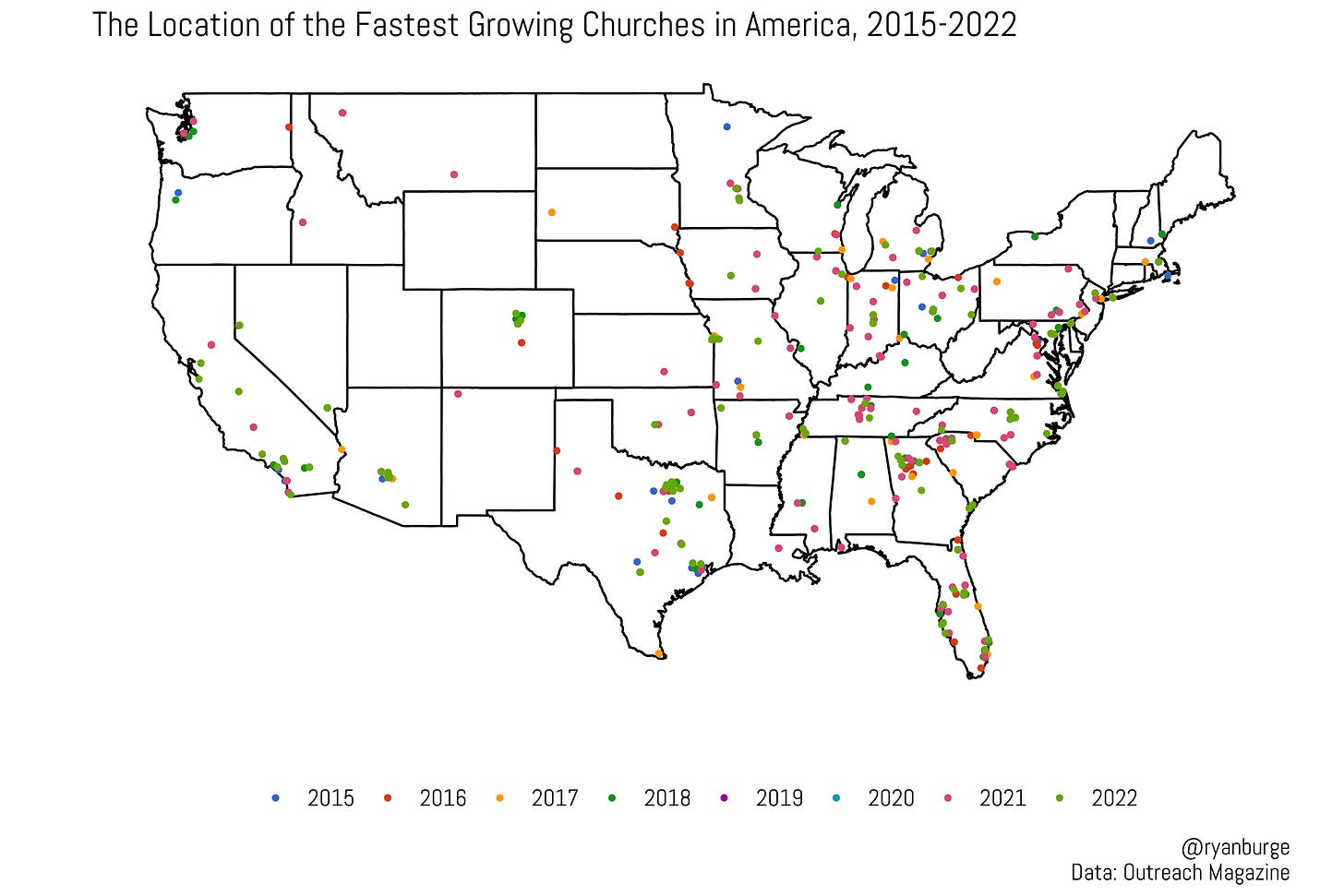Here's the Demographic Formula For Growing Churches
An in-depth analysis of fast growing churches
A couple of months ago, I wrote a post about Outreach’s list of the fastest growing churches in the United States. I extracted the data from the 2021 list and then did some statistical analysis to try and understand how a few demographic factors related to church growth. Needless to say, it got a lot of traffic. It's clear you all wanted to read more about this topic.
What Predicts Church Growth or Decline?
I am, at my core, an empiricist. This worldview contends that human beings gain knowledge exclusively through experiences derived from our five senses. When I talk to my political science graduate students about this, I tell them simply: we have to base our arguments on facts and data
What I really enjoy about writing these regular posts is knowing what kind of data draws more readers, allowing me to compile articles that tend to have a wider audience. That's exactly what I did for this article - I built upon that prior analysis.
The first step was scraping the Outreach website for the 100 fastest-growing churches in the United States for every year of the list from 2015 through 2022. This gives me a total sample of 855 churches. (I'm not sure why, but the 2021 list featured 155 churches, not 100). So, now I have a lot more data in the sample.
First, let's visualize where those churches are located based on the county in which they are situated. That's the map below.
It doesn’t take long to identify a few patterns and trends in the data worth discussing. One of the central conclusions from the previous piece was that many growing churches were in the South - a fact that is clearly evident in this data. There are numerous dots in the Bible Belt, especially concentrated in the Dallas-Fort Worth area as well as in Atlanta and the surrounding region.
However, there are also many churches located in the Midwest in states like Indiana and Ohio. Given that these states have seen an overall decline in their population and an economy struggling to move past its manufacturing heritage, it's noteworthy that there are many growing churches in this part of the country.
I figured you would want to get an even closer look at all the churches on the Outreach list, so I built an interactive map that allows you to zoom, slide, and click to get more information about each church, including its name, location, and pastor.
Here’s a demo of what that looks like:




